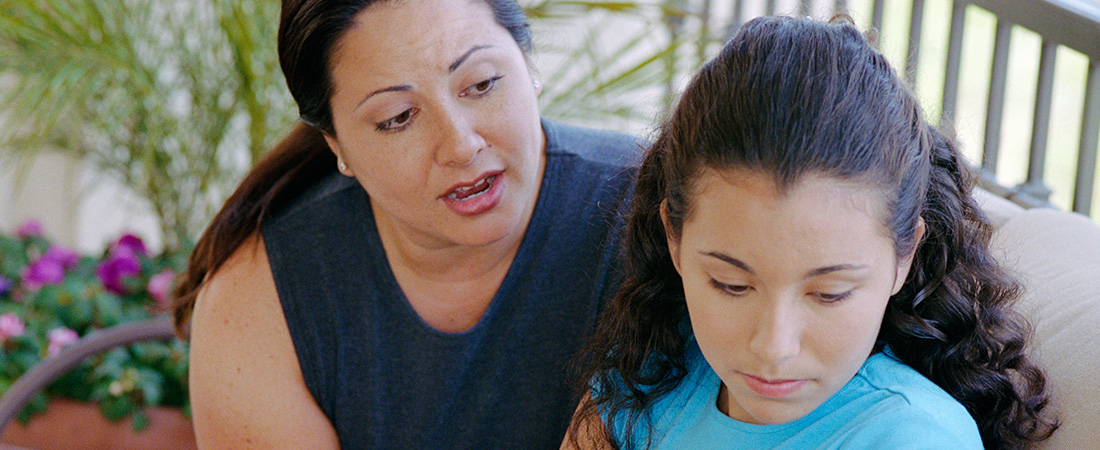Working Together to Improve Teen Health

Helping families have difficult conversations is a part of keeping kids healthy.
EDC’s Alfredo Hernandez enjoys telling the story of the mother from Albuquerque who could finally talk to her daughter about sex.
“Even though she knew the conversation was important, she hadn’t been able to find the right words,” says Hernandez. “Then she listened to the Salud y éxito CDs, and her daughter took ¡Cuídate! And now, not only are she and her daughter having conversations about sexuality, but her 18-year-old son is, too.”
In Latino communities like Albuquerque, where teen pregnancy rates remain above the national average, more success stories like this one are needed. EDC is evaluating the effectiveness of the two interventions that have already made a difference in this family’s life—the University of Michigan’s ¡Cuídate! (Take Care of Yourself), a six-hour workshop on sexual health, pregnancy, and HIV prevention for youth, and EDC’s Salud y éxito (Health and Success), a series of audio CDs on teen health for parents—as well as a combined intervention, dubbed Más que un sueño (More Than a Dream).
The evaluation is being conducted in Albuquerque, Miami, Colorado Springs, and Kansas City, cities with large Latino communities and high rates of teen pregnancy. EDC hopes to enroll 2,000 families in the program evaluation, which is being funded by the U.S. Department of Health and Human Services’ Family and Youth Services Bureau.
“It’s fascinating to hear a mom say that it was easier for her to talk to her kids once she listened to the CDs, and her daughter had the training.” says Hernandez. “These programs help mothers and fathers talk to their kids about some difficult issues.”
More work to do
Nationwide, teen pregnancy is on the decline—and rates have been falling for black, white, and Hispanic teenagers since 1990.
But while national data is trending in a positive direction, some states have struggled to keep pace. This includes New Mexico, which has the highest rate of teen pregnancy in the country, according to recent data from the Guttmacher Institute.
The study divides families into four groups: those who have a child participating in ¡Cuídate!, those who have a parent with the Salud y éxito materials, families who get both interventions through participating in Más que un sueño, and a control group. The evaluation is structured this way to find out whether educating both parents and children about sexual health has a different impact on teen pregnancy rates than does targeting either group individually.
Más que un sueño is different from traditional teen health programs, in that, it recruits both children (12 and 13 year olds) and their parents. The dual-language program is based on nearly a decade’s worth of research and development on a parent-based approach to reducing risky sexual behavior among teens.
A cultural approach
¡Cuídate! and Salud y éxito wade into mature topics, such as how to practice safe sex and how to prevent HIV transmission. And while parents of all backgrounds may feel uncomfortable broaching these subjects with their children, Hernandez says that such direct discussions about sex are often taboo in the largely Roman Catholic Latino communities that are part of the program.
But this reticence to talk about sex is no obstacle to the interventions. Both ¡Cuídate! and Salud y éxito were developed with cultural norms in mind, and use the familiar as a means of opening dialogue. ¡Cuídate!, for example, takes on the concept of machismo, connecting it positively to sexual health.
“¡Cuídate!, especially, talks about how machismo doesn’t mean you have to disrespect people,” says Hernandez. “We talk about how in reality, macho means you have to be respectful, take care of your community, and take care of yourself.”
Salud y éxito uses a radio drama format to weave a narrative about parenting, sex, and health through the experiences of fictional characters. This story-based approach reflects the popularity of television and radio novellas among the Latino populations where the interventions are being used. Salud y éxito draws on CDs that were originally developed for an English-speaking audience; funding from the Annie E. Casey Foundation allowed them to be translated into Spanish and reviewed for cultural relevance.
This format also invites parents to talk about the dilemmas facing the characters in the stories—dilemmas that they, too, may be facing. It is this openness of communication that Hernandez thinks is essential to breaking down the communication barriers between parents and children.
“The CDs are supposed to guide fathers and mothers in how to engage in conversations about specific topics,” he says.
Evaluation staff will continue to follow program participants for about a year after completion of the program. They’ll track teenagers’ health in an effort to determine whether the programs do in fact reduce risky sexual behavior.
Hernandez is confident that they will. “The beautiful thing about this intervention is that it is for both kids and their parents,” he says. “That’s why we think it will make a big difference.”
